Слайд 2Colposcopy
Acetic acid test (3-5% acetic acid)
Schiller test (Lugol’s solution)

Слайд 5 Squamous epithelium
Columnar epithelium
Squamo-columnar junction
Metaplasia
Transformation Zone

Слайд 6Squamous epithelium
Collumnar epithelium
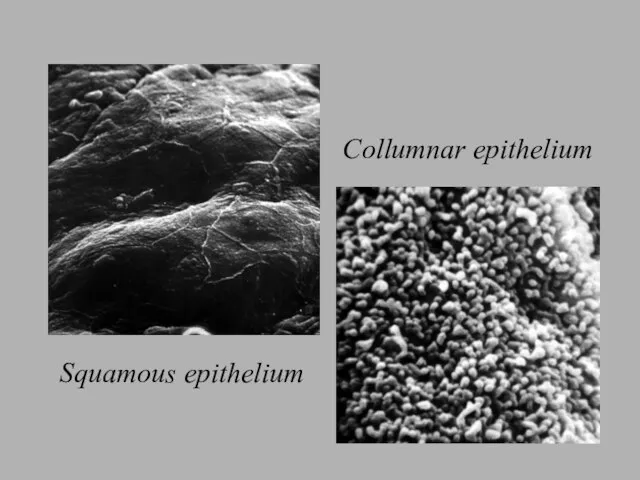
Слайд 7Squamo-collumnar
junction- SCJ
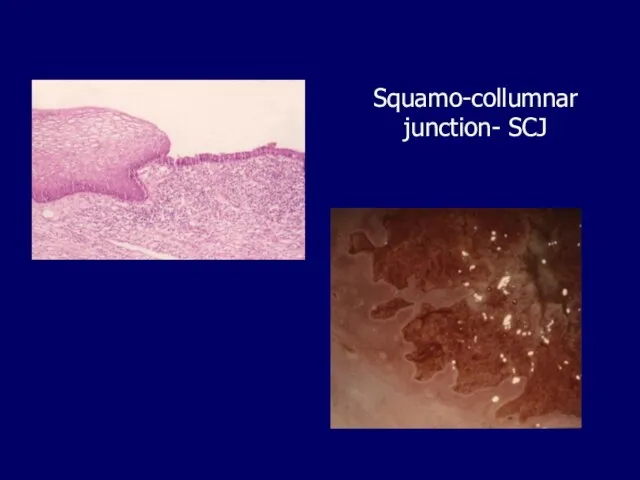
Слайд 11Metaplasia
a physiological and benign process
whereby the columnar epithelium is gradually
replaced by squamous

epithelium
Transformation zone
the area where metaplasia takes place
Слайд 13The result of normal metaplasia is
a normal Transformation zone
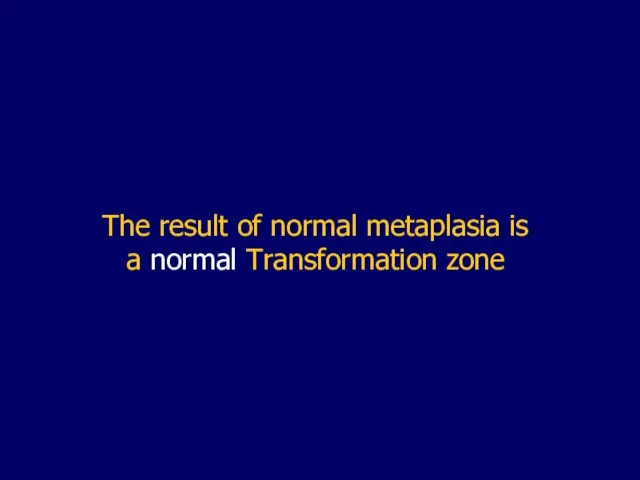
Слайд 15Immature metaplastic cells are
susceptible
to the development of
atypical cellular changes

Слайд 16The process of transformation from
normal cells to atypical cells
occurs under
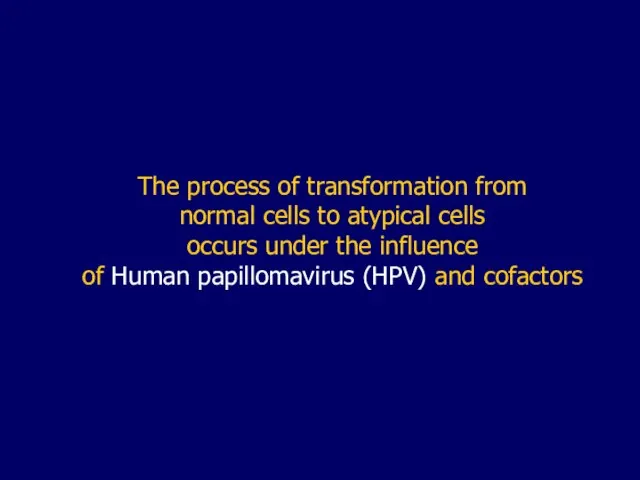
the influence
of Human papillomavirus (HPV) and cofactors
Слайд 17If atypical metaplasia takes place
an abnormal
Transformation zone develops

Слайд 20In colposcopy, it is essential to asses
whether Transformation zone is
normal

or abnormal
Слайд 22 International Federation for Cervical Pathology
and Colposcopy (IFCPC)
Colposcopic Classification
I Normal
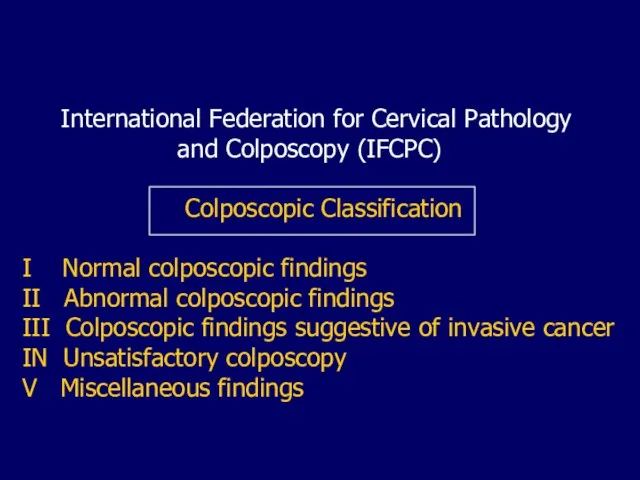
colposcopic findings
II Abnormal colposcopic findings
III Colposcopic findings suggestive of invasive cancer
IN Unsatisfactory colposcopy
V Miscellaneous findings
Слайд 23Components of a normal Transformation zone
Islands of columnar epithelium
Cleft openings

Nabothian cysts
Слайд 25The abnormal Transformation zone is manifested
as a wide spectrum of
epithelial and
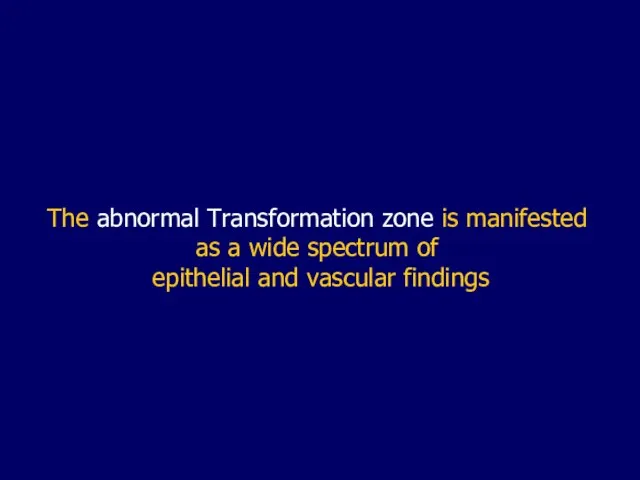
vascular findings
Слайд 26Abnormal transformation zone is
presented by
abnormal (atypical) colposcopic findings
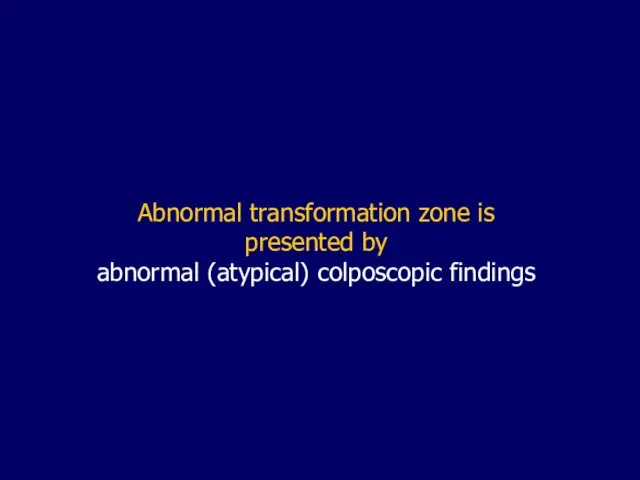
Слайд 27Abnormal colposcopic findings
Leukoplakia
Acetowhite epithelium
Punctation
Mosaic
Iodine negativity
Atypical
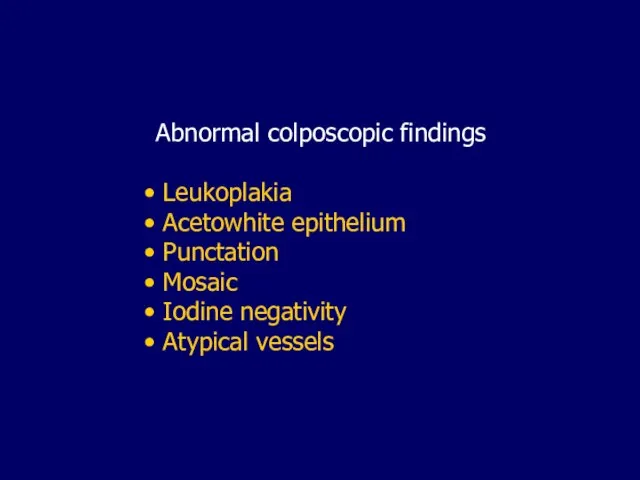
vessels
Слайд 28Leukoplakia
or white plaque
is visible grossly as a white often raised
area

that is not necessarily confined to TZ
Слайд 33 Leukoplakia
HPV infection
Keratinizing CIN
Keratinizing cancer
Chronic trauma
Radiotherapy

Immature metaplasia
Слайд 34Acetowhite epitehlium
Appears grossly normal
but turns white after application
of 3% to 5%

acetic acid
Слайд 37 Acetowhite epithelium
HPV infection
Immature squamous metaplasia
Regenerative or reparative changes
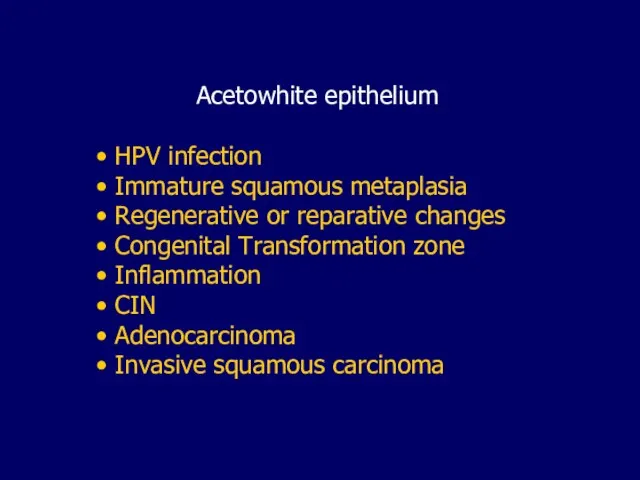
Congenital Transformation zone
Inflammation
CIN
Adenocarcinoma
Invasive squamous carcinoma
Слайд 38Any cells with an enlarged nucleus
such as metaplatic cells or
cells
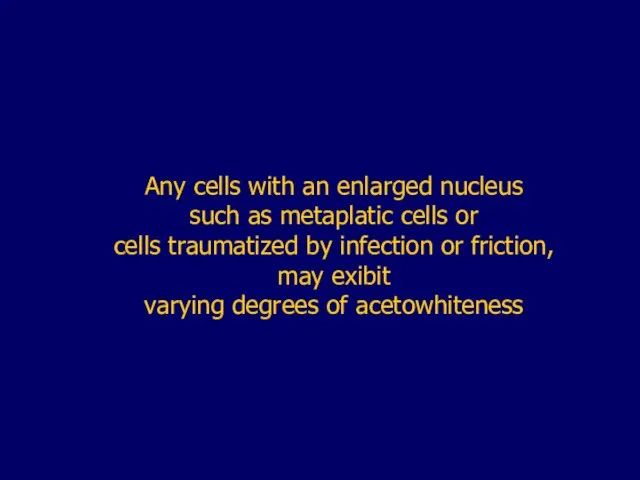
traumatized by infection or friction,
may exibit
varying degrees of acetowhiteness
Слайд 39Punctation
a focal colposcopic pattern in which cappilaries
appear in stippled pattern.
Mozaik
a focal
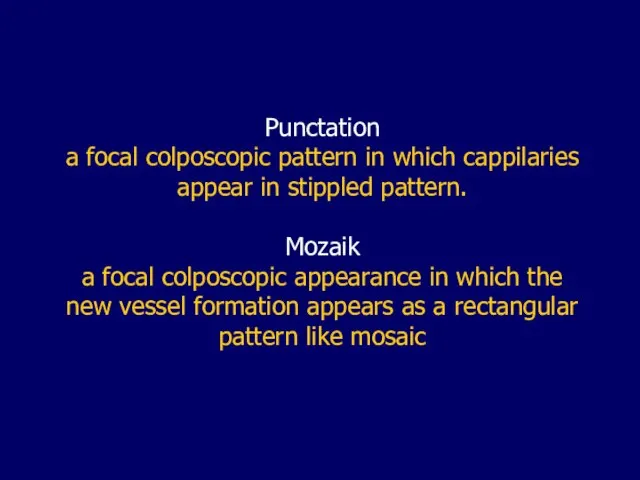
colposcopic appearance in which the
new vessel formation appears as a rectangular
pattern like mosaic
Слайд 40Punctation
colposcopic finding reflecting
the capillaries in the stromal papillae
that are
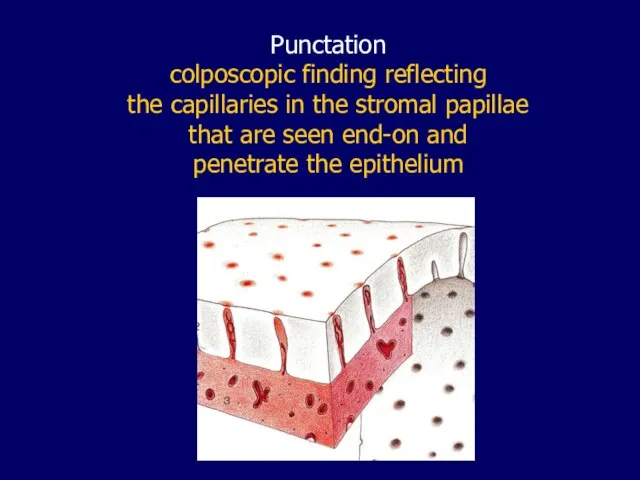
seen end-on and
penetrate the epithelium
Слайд 43Mosaic
colposcopic finding reflecting
the islands of squamous epithelium,
encircled by blood
vessels
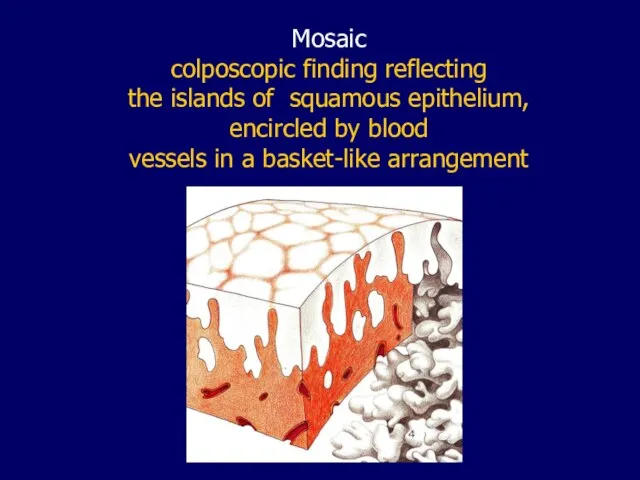
in a basket-like arrangement
Слайд 46 Punctation and Mosaic
Inflammation
Rapidly growing metaplastic epithelium
CIN
Invasive squamous
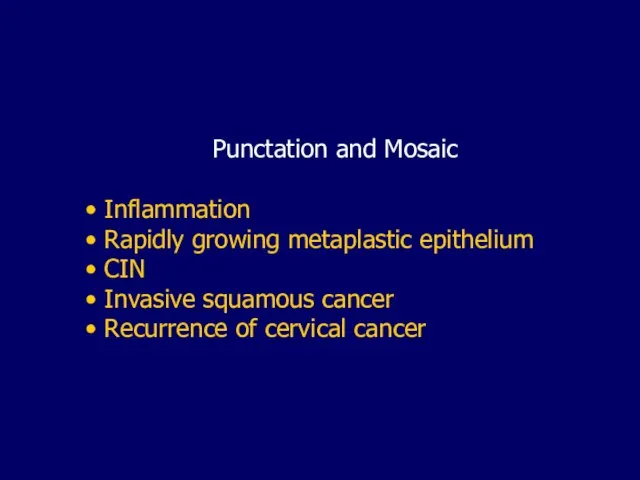
cancer
Recurrence of cervical cancer
Слайд 47If the punctation or mosaic
is not located
in a field of
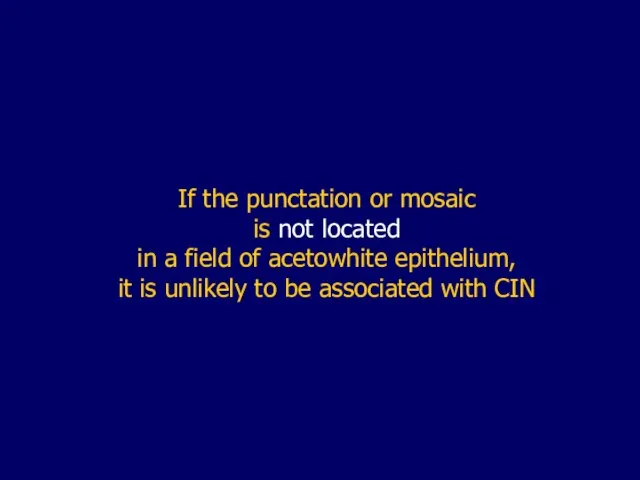
acetowhite epithelium,
it is unlikely to be associated with CIN
Слайд 48Iodine negativity
Immature metaplasia
Cervical intraepithelial neoplasia
Low estrogen status (atrophy)
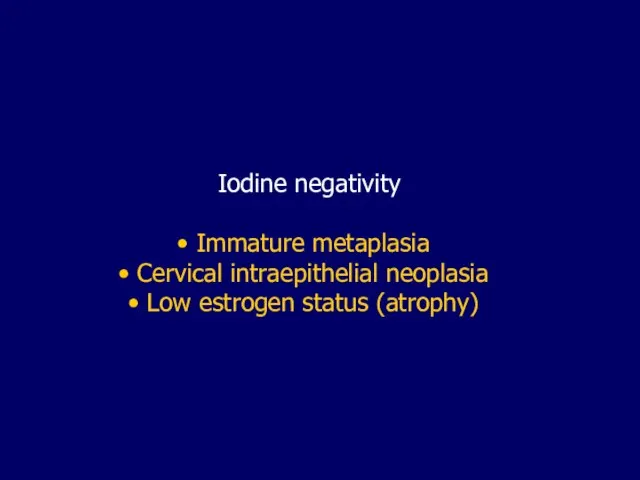
Слайд 49 Atypical vessels
Irregular vessels with an
abrupt and
interrupted

course
Appearing as commas,
corkscrw capillaries or
spaghetti-like forms
Слайд 50Atypical vessels
are the hallmark of invasion,
but can be associated with other

conditions such as
Inflammation
Postirradiation effect
Rapidly growing metaplastic epitheluim
Normal epithelium
Systemic diseases
Слайд 54Development of abnormal
colposcopic features may be the
result of:
Immature physiologic
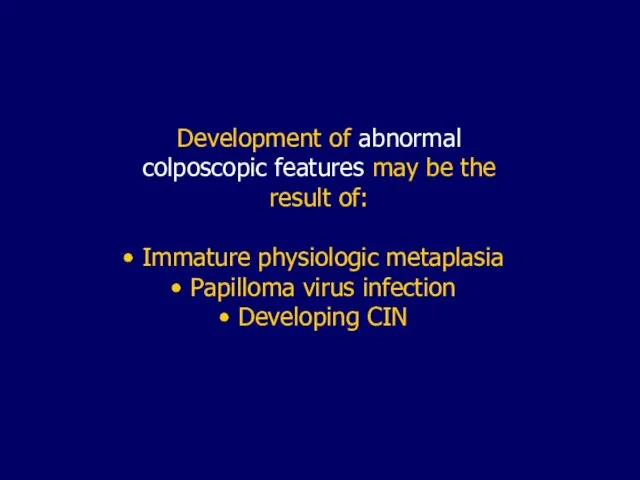
metaplasia
Papilloma virus infection
Developing CIN
Слайд 55Colposcopic index (score)
a grading system used to evaluate the severity
of
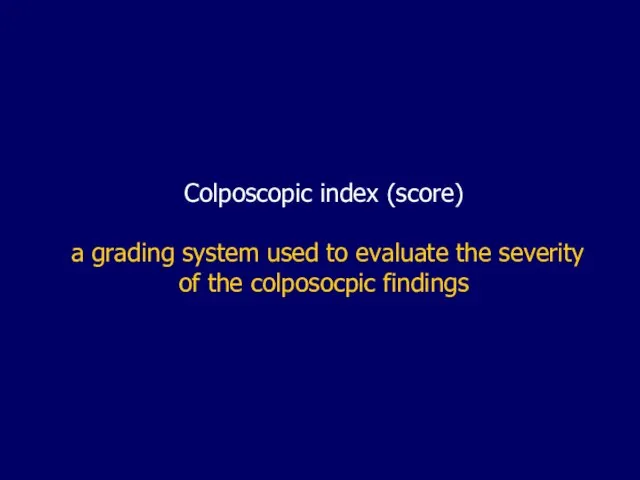
the colposocpic findings
Слайд 56A number of scoring systems
have been introduced:
Coppleson & Pixley

Burghardt
Rubin & Barbo
Reid
Слайд 57Grading of colposcopical findings
Vascular pattern
Intercapillary distance
Color tone
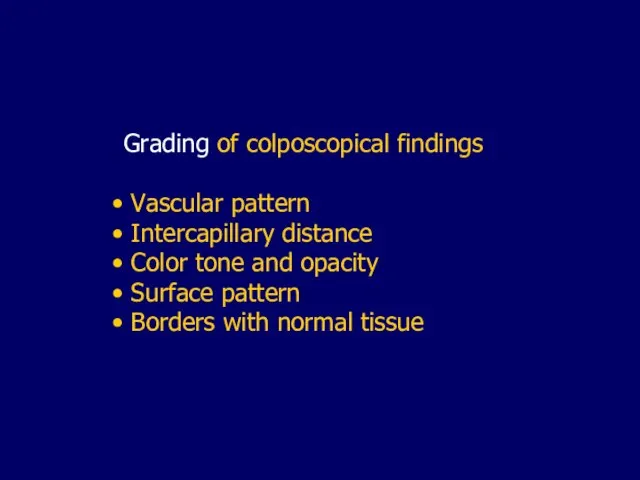
and opacity
Surface pattern
Borders with normal tissue
Слайд 58 Colour
Severe abnormalities become whiter
than minor lesions
They tend

to become white more quickly
Retain their whiteness longer than
the mild lesions
Слайд 60Borders
A clear zone of demarcation exists between
the native squamous epithelium and

high grade CIN lesion.
Mild changes usually have a less distinct outline
Слайд 62Surface pattern
More uneven and elevated contours are,
the higher grade the lesion
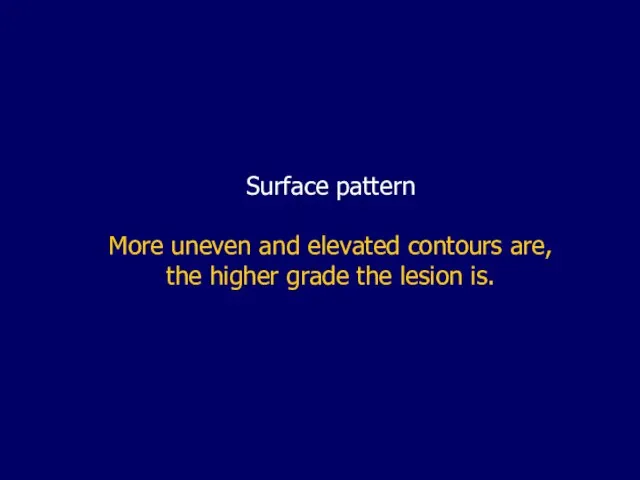
is.
Слайд 64 Intercapillary distance
Increases as the lesion becomes more severe.
The larger vessels

and further apart they lie,
the more severe is the lesion
Слайд 67Ideally, colposcopic scoring should allow
categorizing the colposcopic pattern as:
Normal
Insignificant

Clinically significant
Слайд 69 Colposcopic features suggestive of
metaplastic changes
A smooth surface with

fine, uniform-caliber vessels
Mild acetowhite change
Negative or partial positivity with Lugol’s iodine
Слайд 73As the metaplastic cells transform into
mature squamous cells,
the coloration is
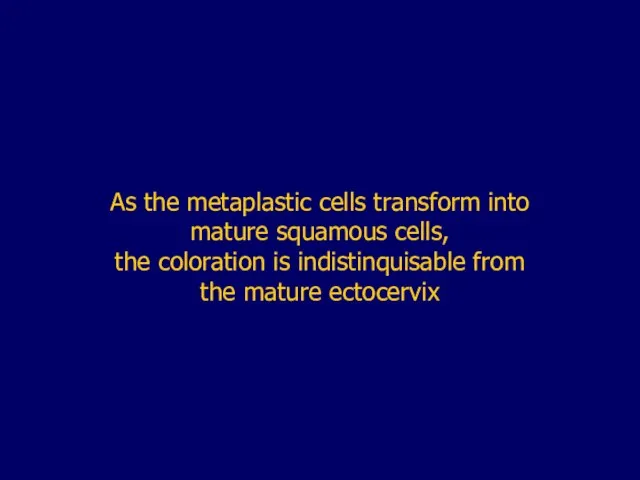
indistinquisable from
the mature ectocervix
Слайд 75 Colposcopic features suggestive of
low grade disease
(minor changes)
A
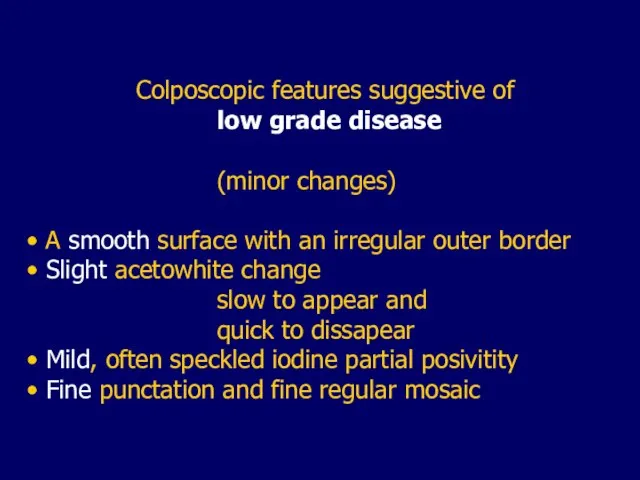
smooth surface with an irregular outer border
Slight acetowhite change
slow to appear and
quick to dissapear
Mild, often speckled iodine partial posivitity
Fine punctation and fine regular mosaic
Слайд 78The subtle differences between the features of
squamous metaplasia and those of low-grade
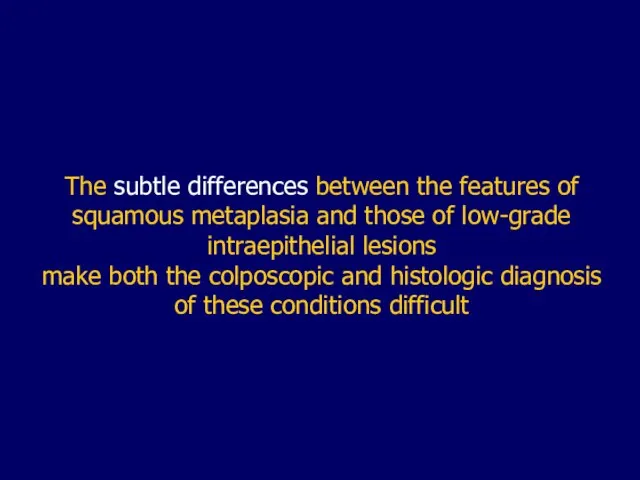
intraepithelial lesions
make both the colposcopic and histologic diagnosis
of these conditions difficult
Слайд 80It is easier to determine that a cervix is
either normal or

very abnormal,
than it is to distinguish between
minor degrees of change
Слайд 81Misinterpretation of trivial changes
as atypical findings can lead
to mismanagement and
overtreatment

of the patient
Слайд 82 Colposcopic features suggestive of
high- grade disease
(major changes)
A
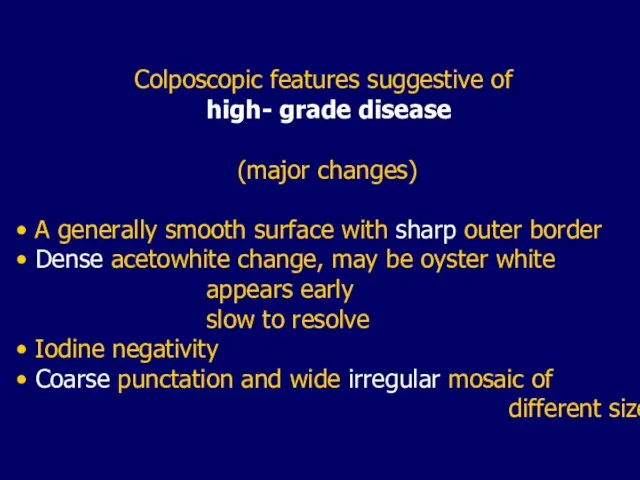
generally smooth surface with sharp outer border
Dense acetowhite change, may be oyster white
appears early
slow to resolve
Iodine negativity
Coarse punctation and wide irregular mosaic of
different size
Слайд 86Signs of microinvasion
Yellow discoloration
Ulceration
Thickened areas
Nodularity
Abnormal vascularity
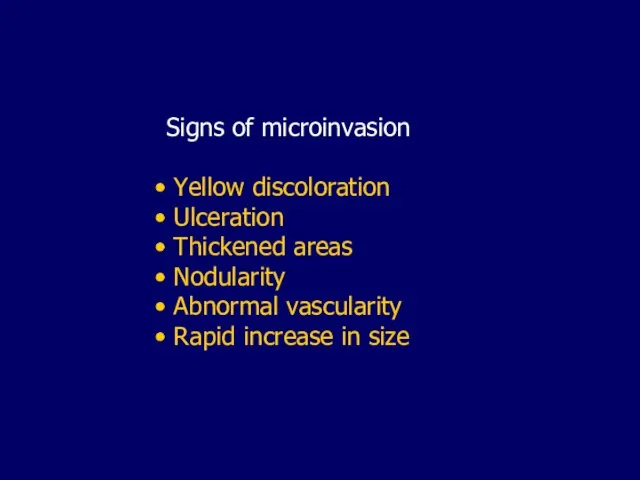
Rapid increase in size
Слайд 89There is a direct relationship
between the size of a lesion and
the

likelihood of invasion
Слайд 91Early stromal invasion
is more common when
there are different types of epithelia
(complex
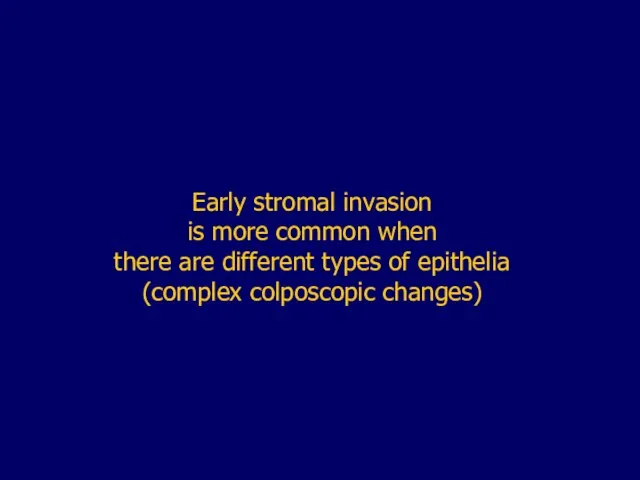
colposcopic changes)
Слайд 94Microinvasion should be suspected
when relatively flat lesions
display focal collections of
atypical vessels
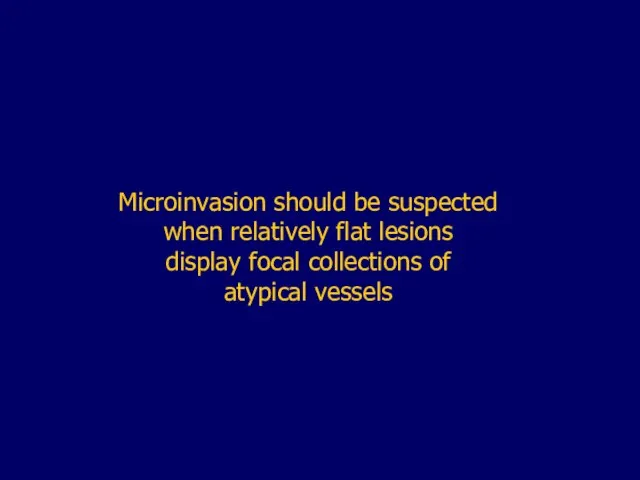
Слайд 96 Colposcopic features suggestive of
invasive cancer
Irregular surface, erosion or
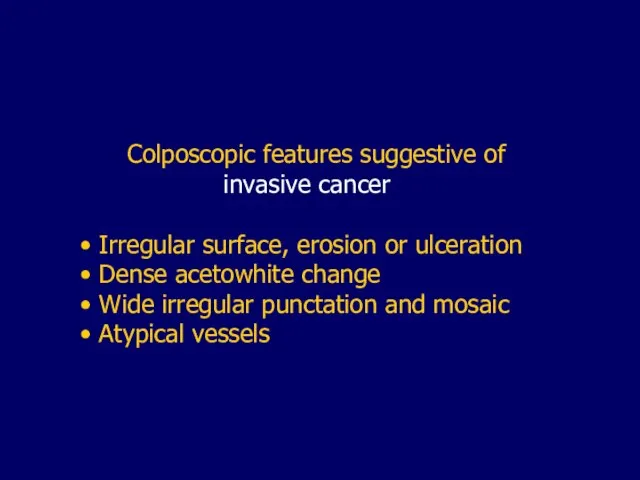
ulceration
Dense acetowhite change
Wide irregular punctation and mosaic
Atypical vessels
Слайд 105In most cases
biopsy is mandatory to establish
the correct diagnosis


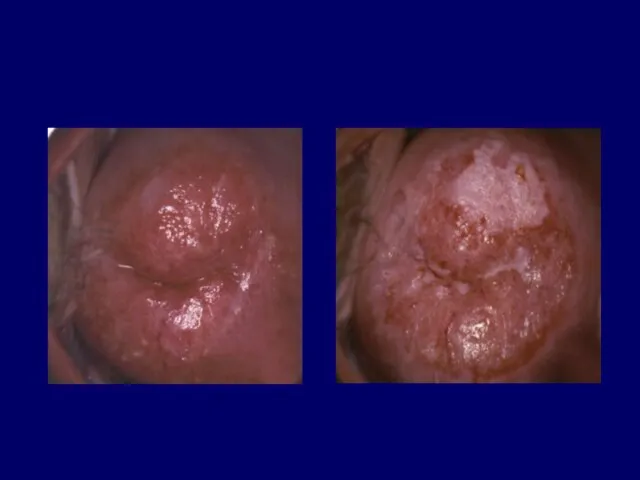




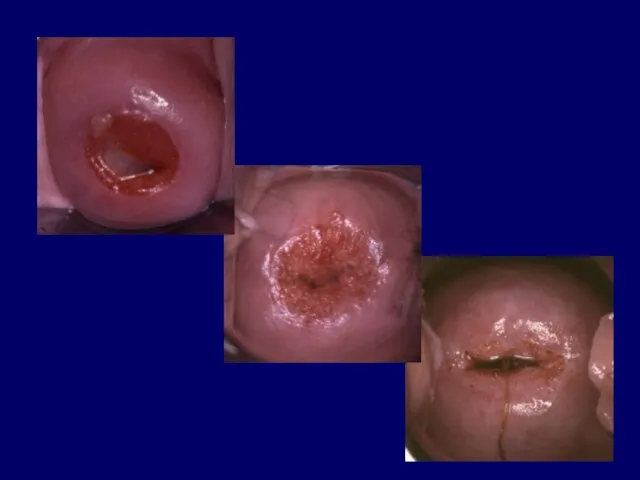
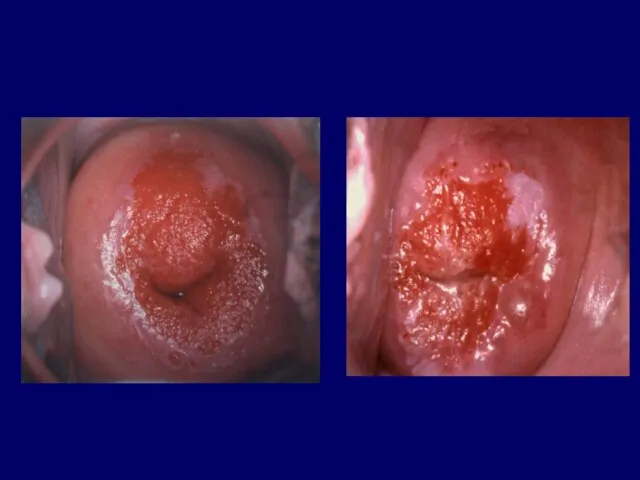
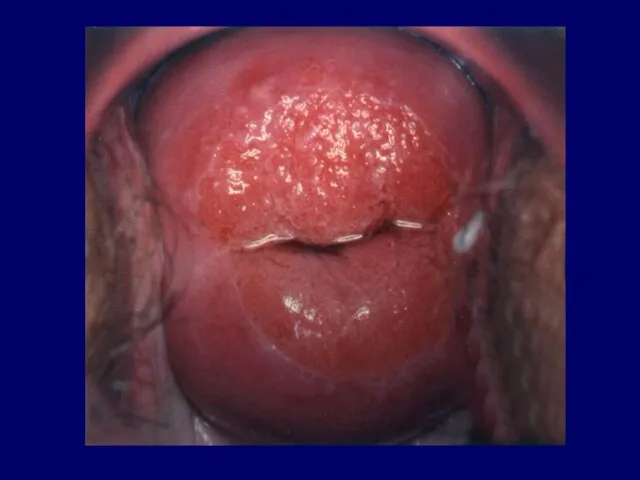

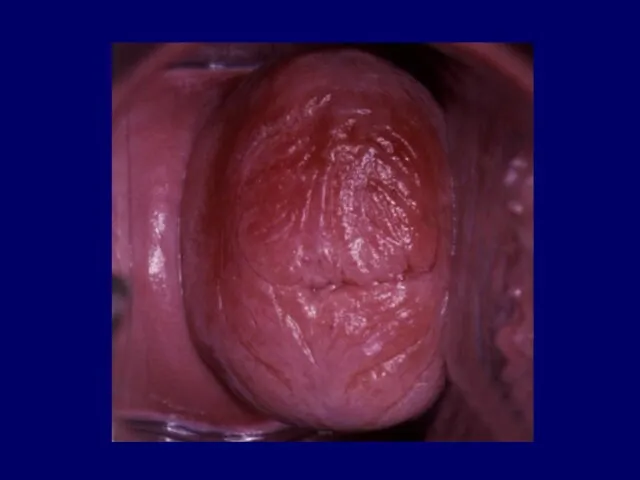

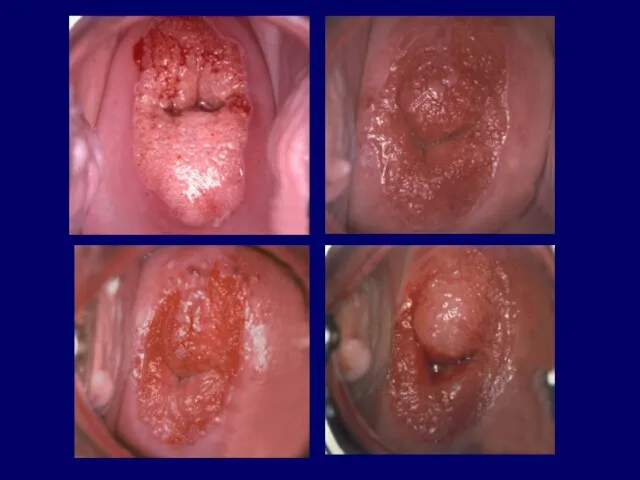



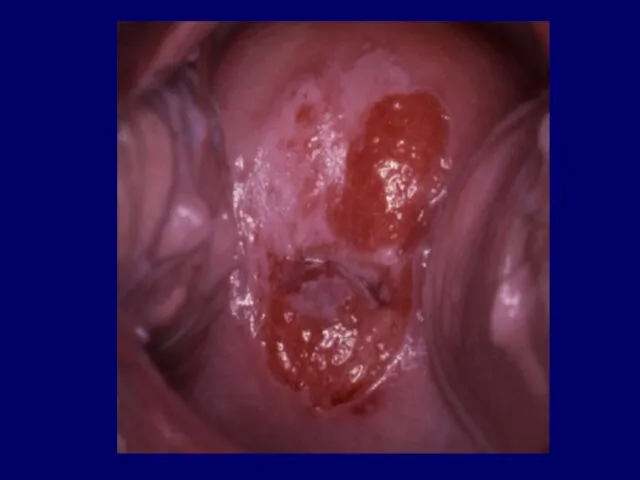


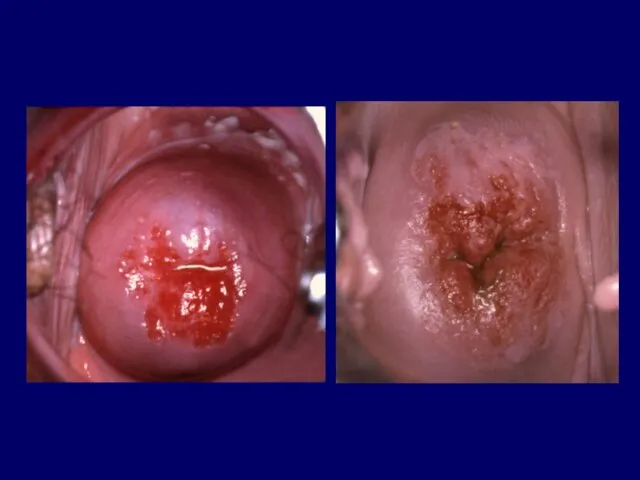







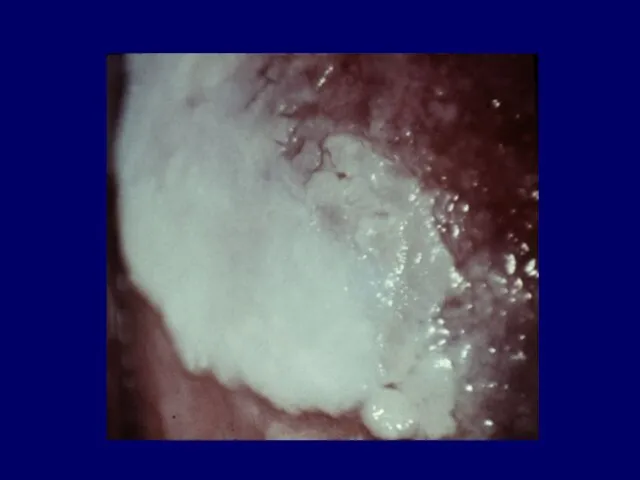
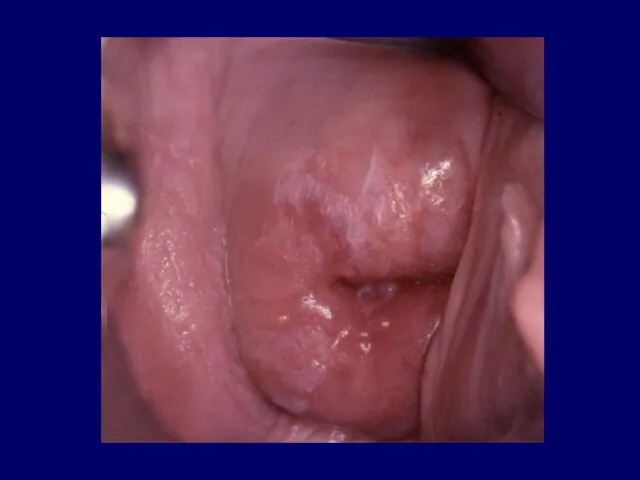
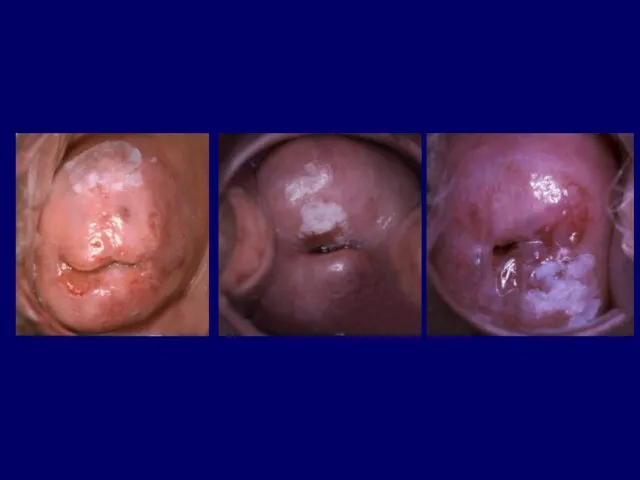




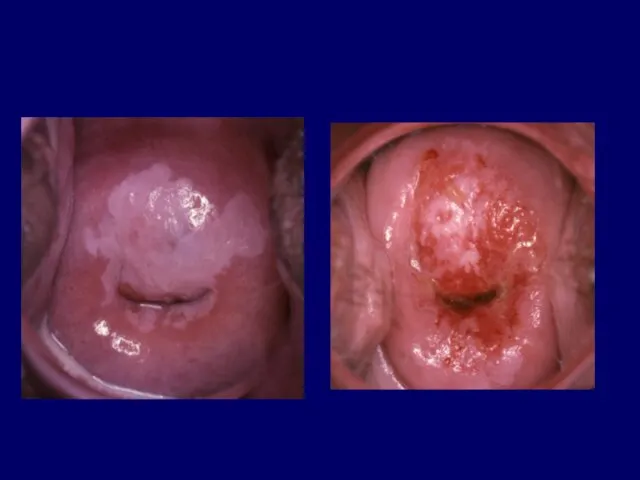




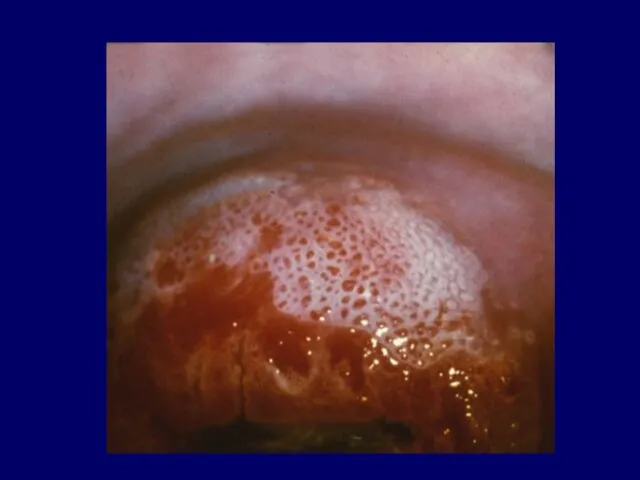


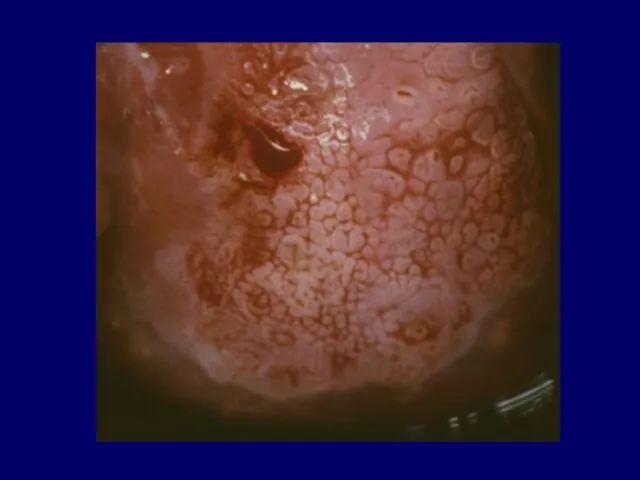
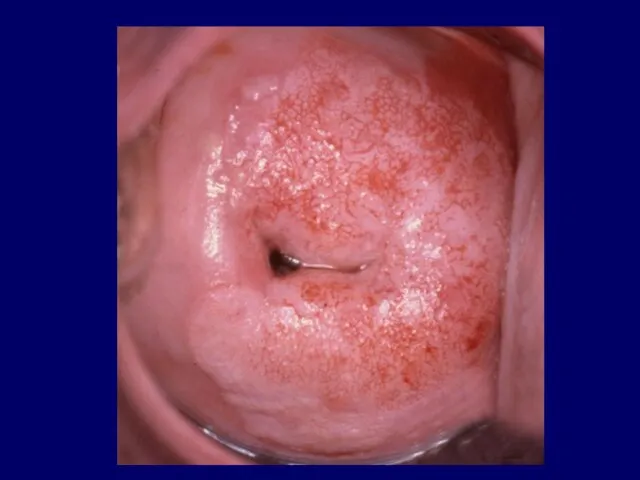





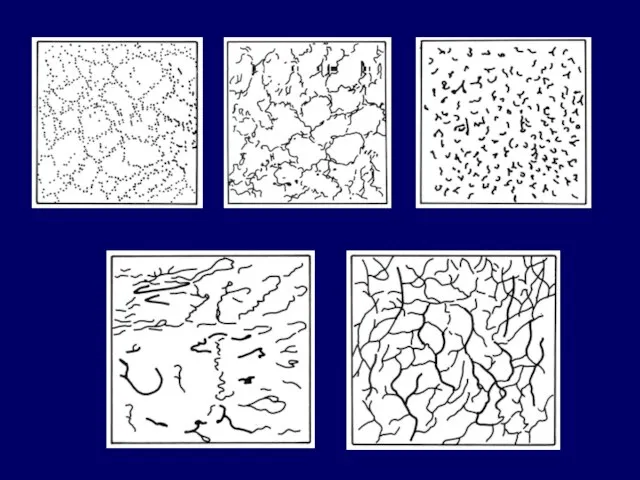
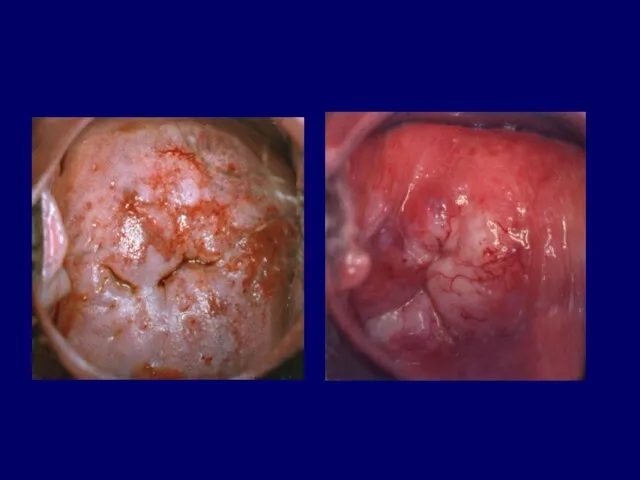
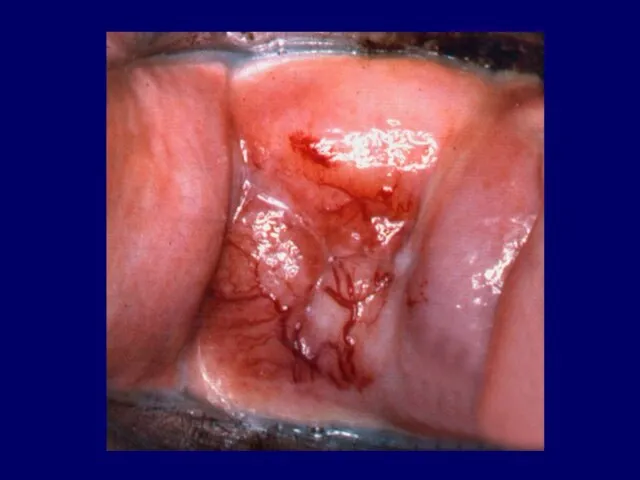





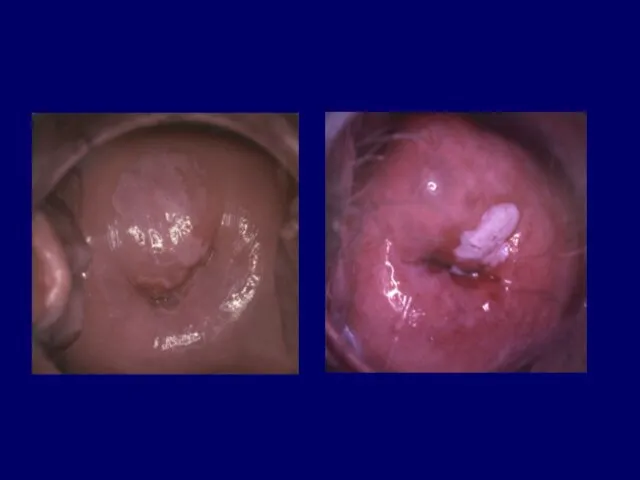



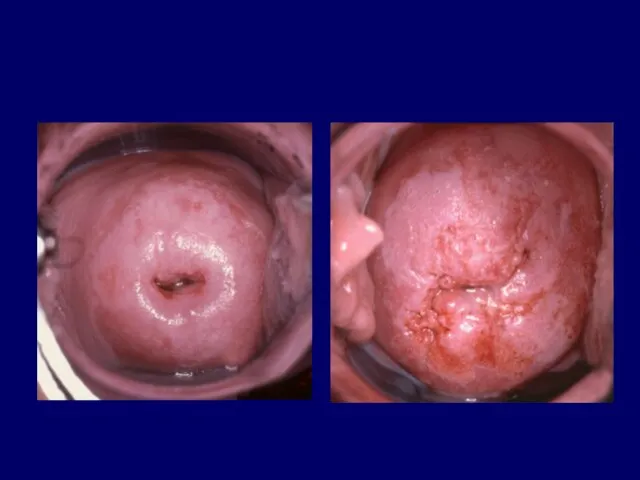

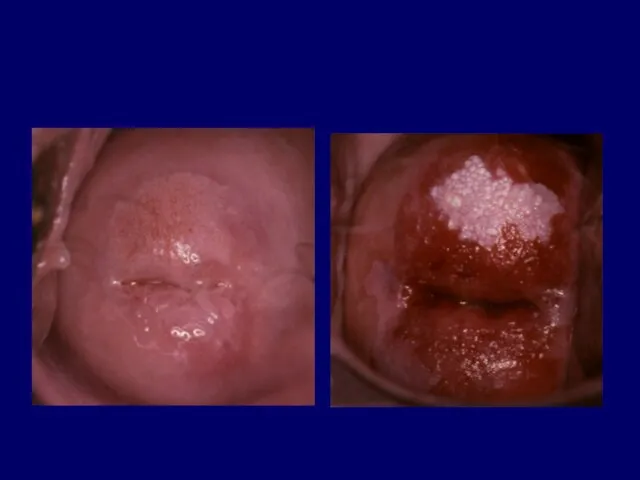
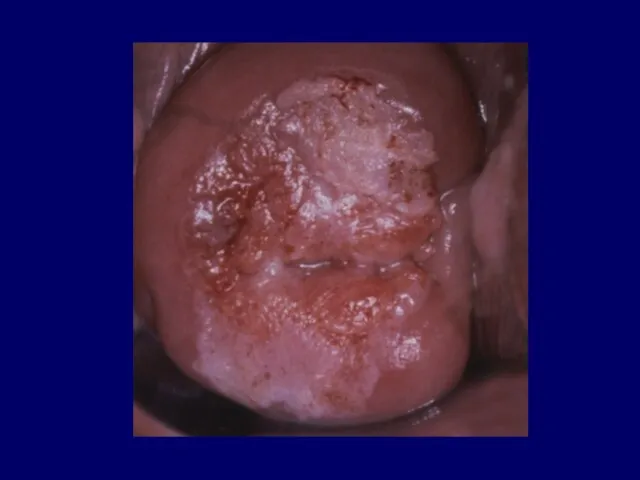

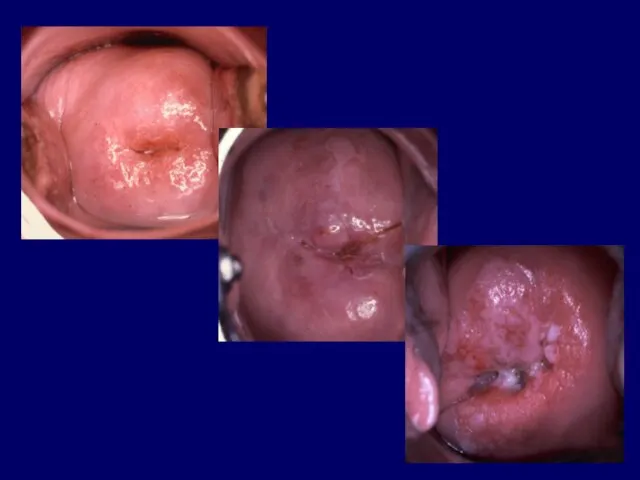

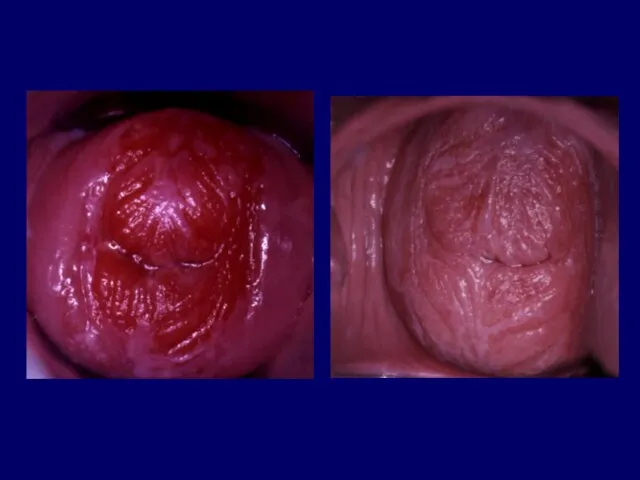
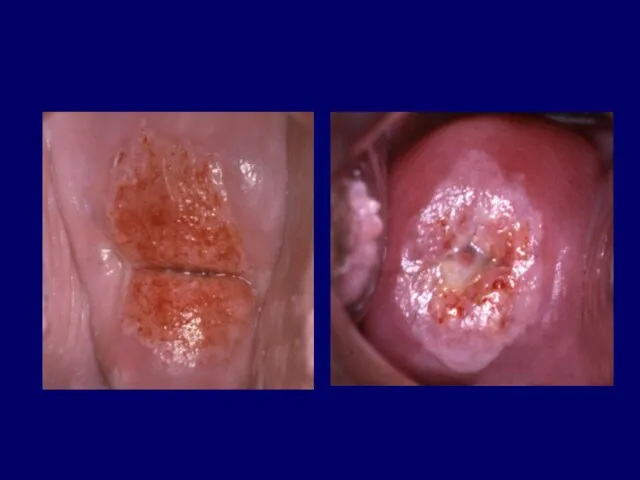
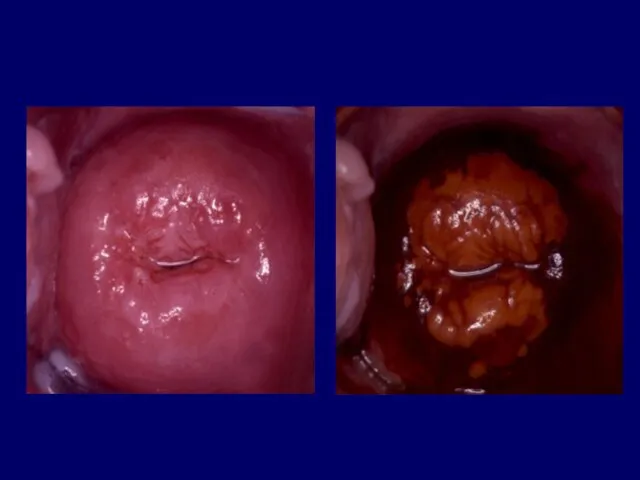

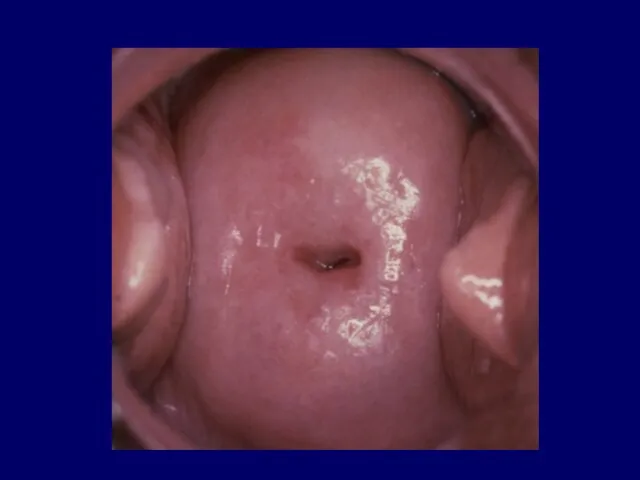

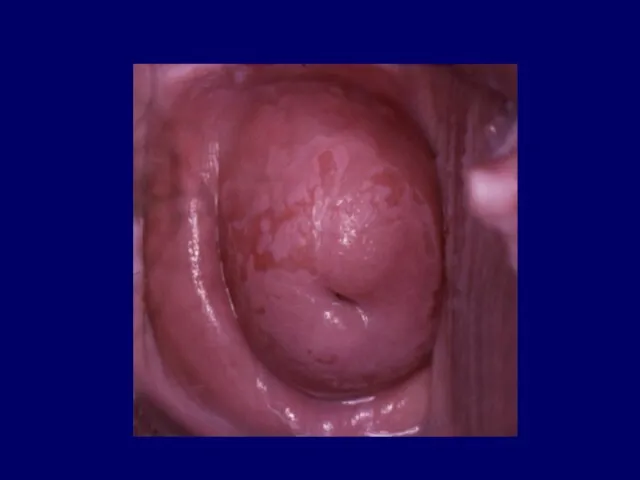
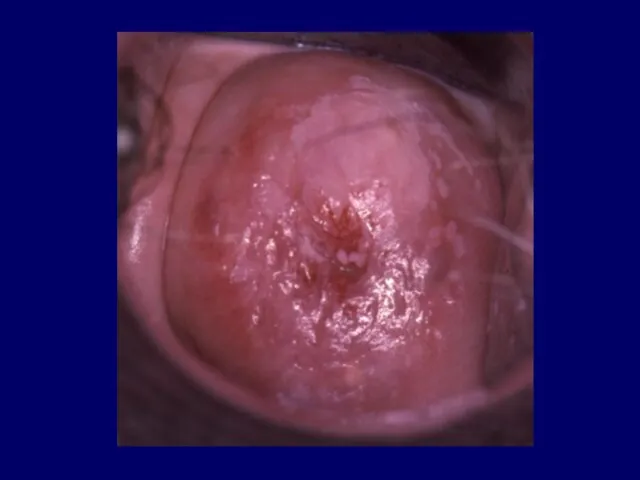





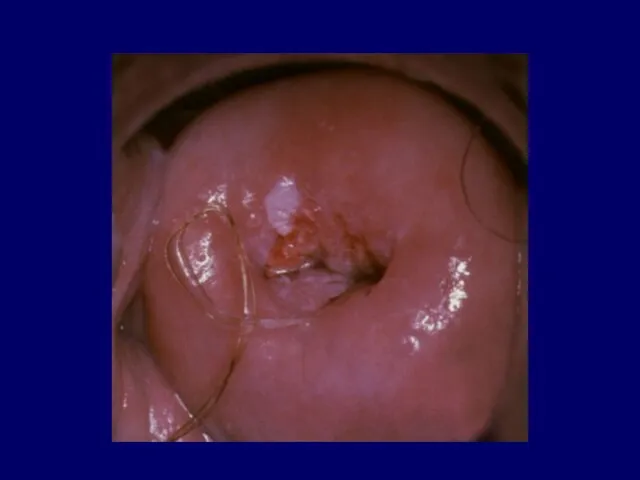
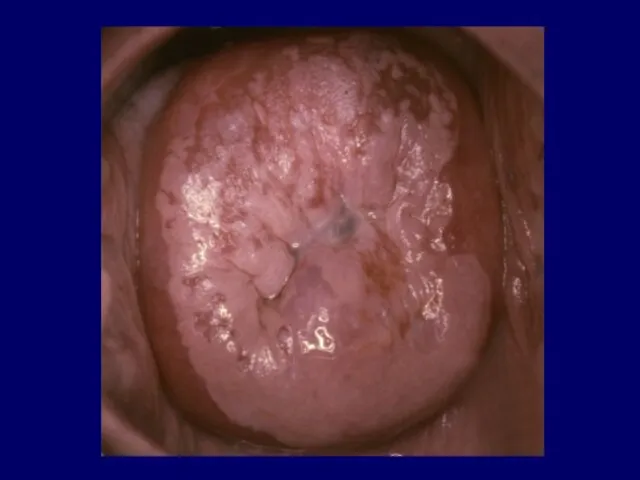
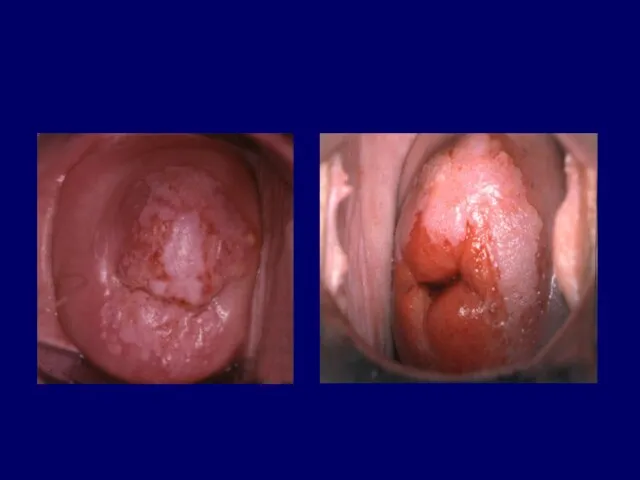












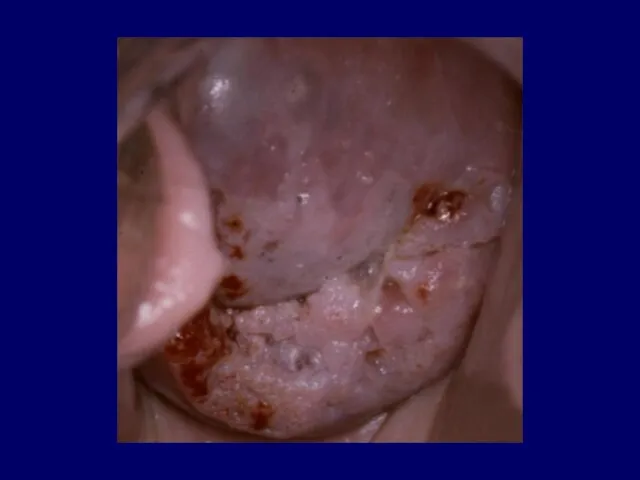
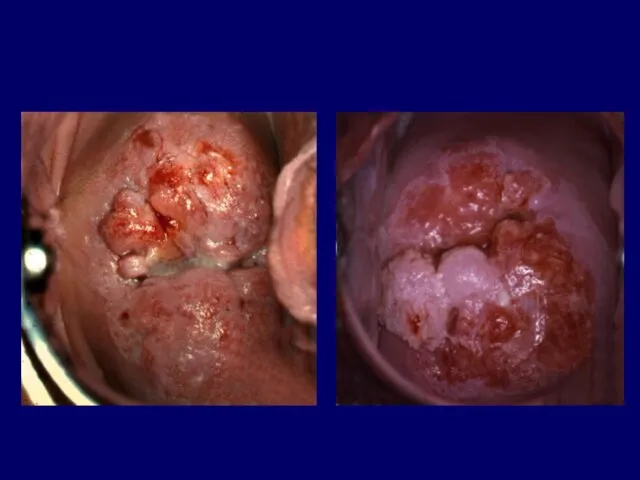

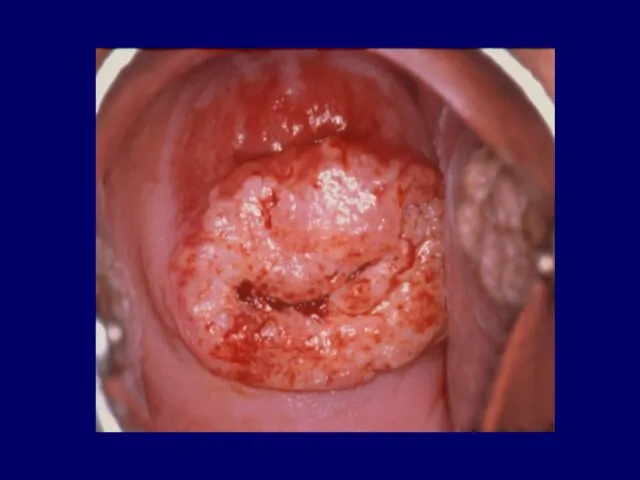
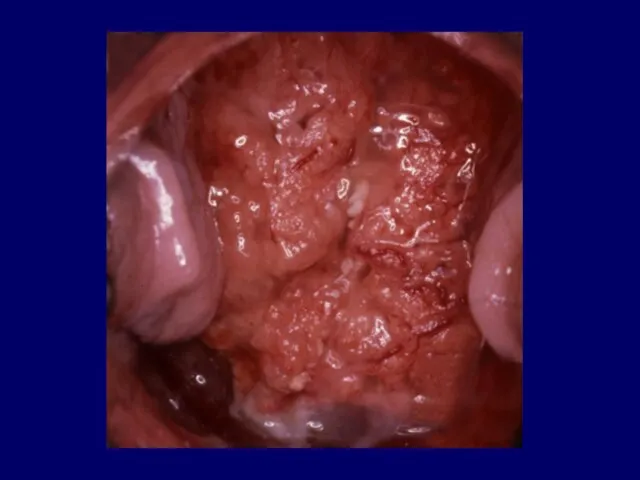

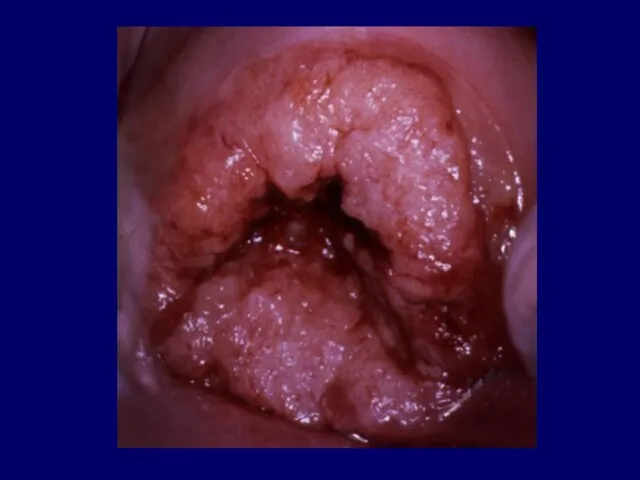

 Контент план август
Контент план август Приемы форматирования текста.
Приемы форматирования текста. 04. Арифметический корень натуральной степени
04. Арифметический корень натуральной степени Решение задач на построение сечений тетраэдра
Решение задач на построение сечений тетраэдра лекція 3 кібербезпека частина 2
лекція 3 кібербезпека частина 2 Презентация на тему Поощрение или наказание
Презентация на тему Поощрение или наказание Я в ответе за свои поступки. Правонарушение
Я в ответе за свои поступки. Правонарушение Модуль – «Фармацевт – фармакогност» Специальность – 5В110300 «Фармация» бакалавриат направление подготовки – «фармацевт» наимено
Модуль – «Фармацевт – фармакогност» Специальность – 5В110300 «Фармация» бакалавриат направление подготовки – «фармацевт» наимено Движение WorldSkill в России
Движение WorldSkill в России Passive voice
Passive voice  Рынок как форма организации товарного производства Исполнители: Карачарова З.В. Каргапольцева Т.А. Екатеринбург 2011
Рынок как форма организации товарного производства Исполнители: Карачарова З.В. Каргапольцева Т.А. Екатеринбург 2011 Политическая мысль Древнего Востока
Политическая мысль Древнего Востока Будь внимателен!
Будь внимателен! Константин Капитан Актер театра и кино, режиссер, шоу мен, сценарист, конферансье, ведущий, тамада.
Константин Капитан Актер театра и кино, режиссер, шоу мен, сценарист, конферансье, ведущий, тамада. Презентация на тему Текстовая информация
Презентация на тему Текстовая информация  Консолидация бюджетов: понятие, основные принципы, консолидирующие показатели
Консолидация бюджетов: понятие, основные принципы, консолидирующие показатели Презентация на тему Силы взаимодействия молекул
Презентация на тему Силы взаимодействия молекул  Крестьянство повседневный быт и обычаи
Крестьянство повседневный быт и обычаи Semantics: Word-meaning Lecture
Semantics: Word-meaning Lecture Что делает человека человеком
Что делает человека человеком БАЗЫ ДАННЫХ
БАЗЫ ДАННЫХ Государственная помощь гражданам, имеющим детей
Государственная помощь гражданам, имеющим детей Духовно-нравственное развитие и воспитание детей
Духовно-нравственное развитие и воспитание детей Презентация о себе - мои личные достижения
Презентация о себе - мои личные достижения My hobby hand made
My hobby hand made своя ИГРА
своя ИГРА Презентация на тему Славные символы России
Презентация на тему Славные символы России Инновационная деятельность Выбор нового направления в сторону альтернативных источников энергоресурсов был неслучайным. Альтер
Инновационная деятельность Выбор нового направления в сторону альтернативных источников энергоресурсов был неслучайным. Альтер